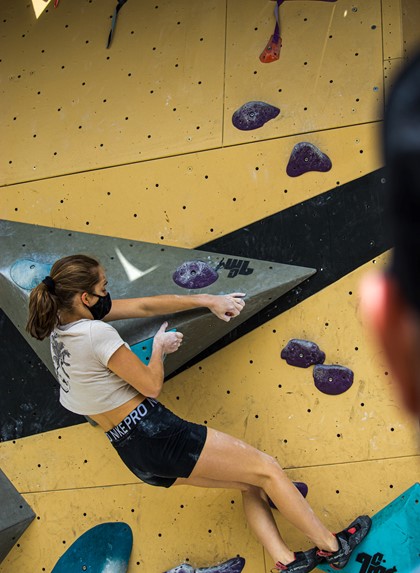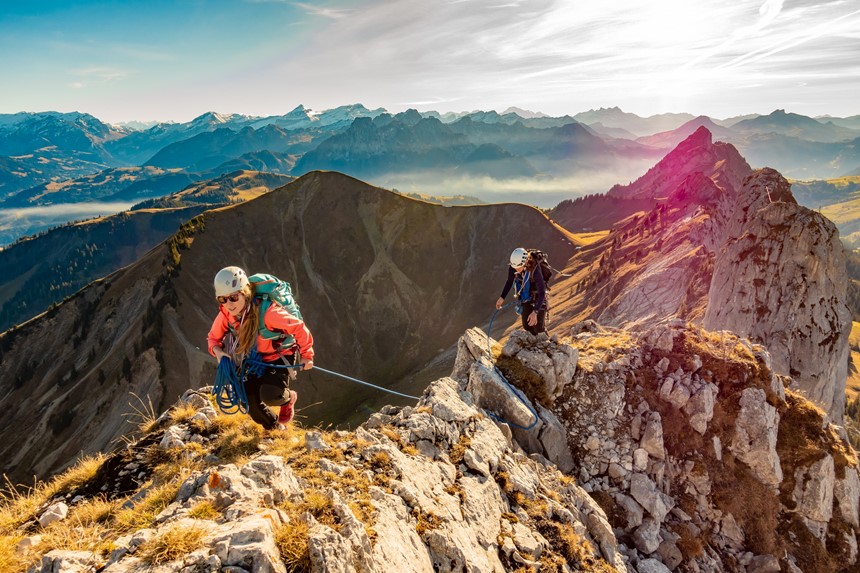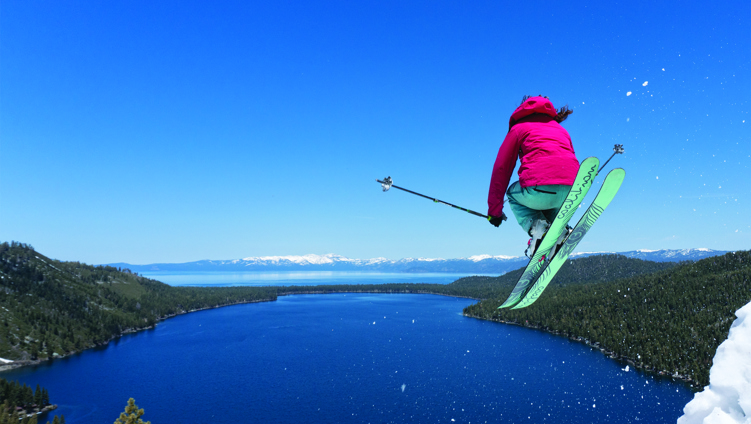
At a recent bouldering competition, Vicky Wilson watched a male climber nonchalantly jump onto the women's boulders, before the medals had even been awarded. It got her thinking about gender stereotypes and abundance in climbing.

At a recent bouldering competition, Vicky Wilson watched a male climber nonchalantly jump onto the women's boulders, before the medals had even been awarded. It got her thinking about gender stereotypes and abundance in climbing.
At a recent bouldering competition I attended, seconds after the last woman finalist topped the block, before medals had even been awarded, one of the male finalists pulled onto the female finals route. At best this was an oblivious misjudgement and enthusiasm to try the route; at worst, an arrogant attempt to expose the female route as ‘easy’. “He does this at every comp,” my teammate informed me. The man balanced across the first few moves showing impressive flexibility before slipping off the final dyno, a move where climbers jump to catch a hold.
Typically, women climbers are expected to ascend routes statically, using precision and flexibility to dance up the wall, whilst their ‘stronger’ male counterparts dynamically pull up the wall using brute force. On the wall, these gendered assumptions often underpin well intentioned comments such as “Ah, it’s harder for you because of your physique,” or “It’s easy, watch.” Though when my friends say these phrases they often intend to be encouraging, they make me feel embarrassed at my weaknesses and give me an excuse to give up and dismiss the route as impossible due to my gender. Whilst physiological factors like height and weight distribution certainly play a role in people’s climbing style, these assumptions, I argue, are embedded in stereotypes of women as tentative, delicate and more reserved than the fearless male risk takers. Beneath these stereotypes lies the age-old dichotomy of men as daring adventurers and women as glamorous, domestic nurturers.
Images courtesy of Mark McGregor (left) and Maxime Dore, Unsplash


'Beneath these stereotypes lies the age-old dichotomy of men as daring adventurers and women as glamorous, domestic nurturers.'
Assertive women are often critiqued for their unapologetic abundance. Whilst bold men are typically hailed as bosses, women are disregarded as bossy for speaking up. The impact of this is clear in gendered dialect both in day-to-day conversations and professional emails. Often women kneecap their sentences with softening phrases like “maybe”, “just”, “I believe” or “I’m not an expert but” in order to appear non threatening and receive a respectful response. They are also more likely to be perceived as lacking. In 2017, for example, one man accidentally signed off his emails with his female colleague’s name, only to find that the people he was emailing suddenly grew rigid and patronising when they believed they were conversing with a woman. Those at the intersection of marginalised gender, racial and sexual identities are at particular risk. On my laptop, as a reminder to speak directly and avoid kneecapping, I have a sticker of Florence Given’s quote: “Maybe I’m too much, maybe my abundance just reminds you that you’re lacking.”
This lack of appreciation for women’s abundance translates into the climbing world. The creative, technical style typically adopted by shorter, less brutally strong climbers is showcased far less in competition routes than dynamic, ‘strengthy’ moves. Climbing’s Olympic debut brought intricate crowd-pleasing problems which largely centred on flashy, dynamic coordination moves. As climbing ascends into the public eye, the community must find a balance between celebrating the typically ‘female’ technical climbing style and not limiting women and non-binary climbers to static, delicate problems.
Image courtesy of Sylvain Mauroux, Unsplash

'As climbing ascends into the public eye, the community must find a balance between celebrating the typically ‘female’ technical climbing style and not limiting women and non-binary climbers to static, delicate problems.'
Climbing is an intensely psychological sport; if women are taught that they cannot climb dynamically, they are less likely to commit to a jump and catch the dyno. The 2022 documentary, The Wall: Climb for Gold, provides a vulnerable window into the mental and physical challenges faced by four women climbers in their preparation for the Olympics. The film explores the impact of lockdown and the pressures to perform faced by Janja Garnbret, Brooke Raboutou, Shauna Coxsey and Miho Nonaka on their fight to become known not only as the best female climbers in the world, but as the best climbers.



Olympic gold medalist, Janja is renowned for her fearless commitment to coordinated dynamic moves. In The Wall she reveals how mental blocks resulting from mounting pressure shook her performance and led to a series of unprecedented falls at the end of the 2019 season. Through my own climbing, I have similarly noticed how crucial mentality is for executing powerful moves; gendered stereotypes that sow doubt and embarrassment warp climbers’ mindsets, pushing them towards certain styles. They are a dangerous hindrance.



Speaking to climbers from my university climbing society, I discovered that sexist stereotypes deter many women from attempting overhung or dynamic routes. Insidious and often well intentioned remarks from male friends who tell me, “Ah well, you’re good at the slab climbs” when I fall on a dyno, or climbers who repeatedly show me how they do the route to show off how easy they find it reinforce gender stereotypes and drive me to shy away from strength-based routes.
One climber stated that they rarely try overhanging climbs when other people are around, confessing, “I prefer going when it’s a quieter session when I’m not judged by how I climb.” “I’d sometimes use the excuse that I’m not strong enough” to avoid strength oriented routes, another revealed, “since I’m not expected to be as strong [as men].” Meanwhile, some found that technical climbing styles are under-appreciated, arguing that “a lot of climbing centres set routes from a brute-force perspective which I will usually write off due to the climbing world laying that out as a male route.” These sexist stereotypes can be insidious and difficult to trace and expose.
Ultimately, through celebrating and practising both technical and strength-focused problems, climbers of all identities can embrace their abundance and progress as well-rounded and equal athletes. Whilst route setters at competitions and in gyms should work on creating diverse problems that allow both women and men to show off both their technical prowess and their strength, changes in local climbing communities can also be influential. Climbers should use language to encourage rather than limit fellow climbers by rejecting gendered stereotypes, in order to create a more equal and welcoming environment in the gym, at the crag and in life more broadly.

